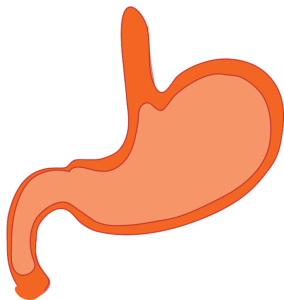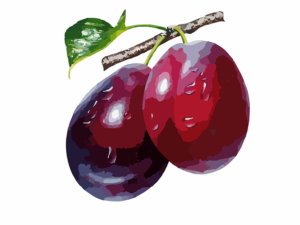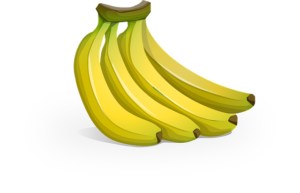The Fodmap diet, and the low Fodmap recipes that go with it, were developed by Monash University in Australia to treat patients suffering from irritable bowel syndrome (IBS). FODMAPs is an acronym for fermentable oligosaccharides, disaccharides, monosaccharides, and polyols — four categories of carbohydrates found in different foods.

Fodmap Diet Foods
It began when Monash University Ph.D. student Sue Shepherd discovered that over 70% of IBS patients she treated with a Fodmap diet experienced significant improvement in their symptoms.
Today Fodmaps is an accepted dietary plan used internationally by nutritionists and dieticians as a primary treatment for IBS.
According to Monash University, Fodmaps are poorly digested in the small intestine, which leads to their fermentation by bacteria in the digestive tract, resulting in bloating, gas, pain, and constipation.
What Is Irritable Bowel Syndrome (IBS)?
According to Martin Schlup, a senior medical lecturer at the University of Otago in New Zealand, irritable bowel syndrome (IBS) is a condition that affects as many as 20% of the population and involves discomforting symptoms of pain, poor appetite, weight gain, or weight loss, and constipation, diarrhea or both.
Despite IBS being so common, scientists still do not fully understand what causes it or how to treat it. Most often, the only thing doctors can do to support patients with IBS is to prescribe medications (bulking agents, laxatives, antispasmodics, antidepressants, etc.) to help control symptoms.
THE FODMAP DIET PlAN
On the Fodmap diet, participants remove all Fodmap-containing foods from their meals for up to 8 weeks. During this time, only low Fodmap recipes can be used for cooking to ensure that digestion improves and symptoms calm down. After the 8 week period is up, Fodmap food groups are introduced back into the diet one at a time. For example, one teaspoon of honey can be eaten to test the “monosaccharide” food group. If symptoms of IBS return, that specific group of Fodmaps can be labeled as a problem group to be avoided in the future, and you can move on to test the next group.
While 8 weeks of a calm and healthy digestive system might make followers of the Fodmap diet reluctant to reintroduce food, other than the low fodmap recipes, it is an important step in fear of their symptoms returning. If the reintroduction of the high Fodmap foods doesn’t take place, you will never know which specific foods to avoid and may have to remain on a highly restricted diet unnecessarily. When the Fodmap diet is adhered to strictly, studies show that up to 72% of patients can expect significant improvements in their symptoms.
FODMAPS DIET FOOD LIST
When planning your low Fodmap recipes, it is important to know what foods are safe for regular consumption on the Fodmap Diet food list. The Fodmap diet may seem complicated to begin with. Still, if you adhere to the following foods for 8 weeks and get into the habit of checking ingredient labels for sweeteners, fibres, and grains, it will soon feel like second nature.
HIGH FODMAP FOODS
• Fermentable Oligosaccharides – fructans and galactans from kidney beans, baked beans, soybeans, peas, lentils, legumes, wheat, rye, inulin, brassica vegetables, and onion family vegetables.
• Di-saccharides – lactose from all dairy products
• Mono-saccharides – fructose found in fruits, juices, honey, and corn syrup.
• Polyols – apples, apricots, avocados, pears, plums, watermelons, cauliflower, bell peppers, mushrooms, and sweeteners such as sorbitol (420), mannitol (421), isomalt (953), maltitol (965), and xylitol (967).
LOW FODMAP FOODS
• Vegetables – celery, bok choy, green beans, olives, potatoes, sweet potatoes, carrots, lettuce, endives, pumpkin, silverbeet, spinach, tomatoes, turnips, zucchini, and aromatic herbs.
• Grains – rice, oats, spelt, polenta, quinoa, psyllium, millet, corn, and arrowroot.

• Fruits – bananas, berries, honeydew melon, kiwifruit, lemons, limes, mandarins, oranges, canteloupe, rockmelon, tangelo, and grapes.
• Dairy – lactose-free milk, cheeses, and yogurts, as well as some hard cheeses.
• Sweeteners – sugar, glucose, stevia, maple syrup, and molasses.
SAMPLE DIET – LOW FODMAP RECIPES
• Breakfast – oat porridge with almond milk, berries, and/or bananas.
• Lunch – a gluten-free sandwich with tuna/meat/tofu, fresh sprouts, and aged cheese.
• Dinner – grilled chicken with fresh mesclun salad, roasted Fodmap-friendly vegetables (potatoes, pumpkin, turnips, zucchini), and steamed spinach.
• Snacks – gluten-free cookies, rice crackers, bananas, fresh berries, kiwifruit, lactose-free yogurt.
If you require further help and inspiration for putting together Low Fodmap recipes, Monash University has put together both a booklet and an iPhone App to support people on the Fodmap diet.
Read also Low Fodmap Diet for I.B.S.
